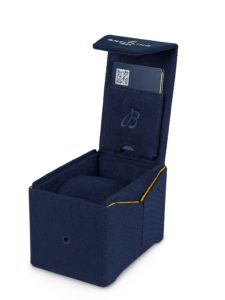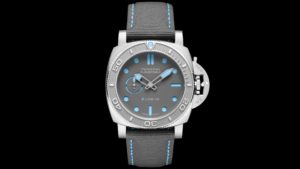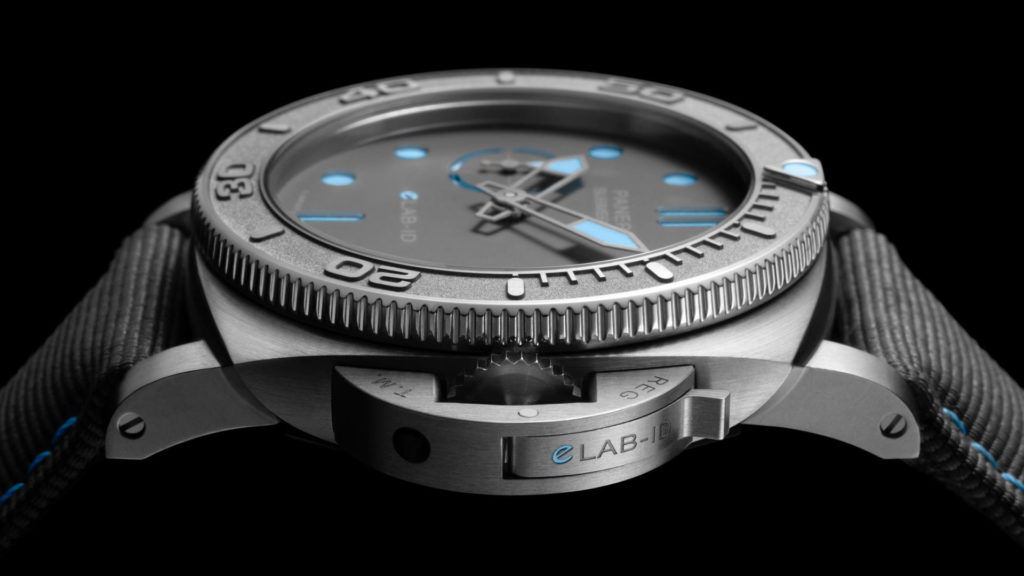Sustainability is already the watchword of the twenty-first century. After several centuries of accelerating development brought us to unprecedented levels of prosperity, we now need to balance that prosperity with the planet we live on. So... How sustainable are watches really?
Text: Thomas van Straaten
In most industries, you see this overtly translated into the proposition towards the consumer. Green is hot, including from a commercial point of view. Brands are tripping over each other to attract the public with green promises. The watch world, with exceptions, seems to remain eerily quiet. What is going on there? Is sustainability not an issue? Or is there actually movement in this traditionally quite conservative industry?
Intrinsically sustainable
High-quality watches have one factor going for them to begin with: they are intrinsically durable. A good watch is specifically designed to last. The construction and materials used ensure that it is almost endlessly repairable. In that context, consider Patek Philippe's famous tagline: "You never actually own a Patek Philippe. You merely look after it for the next generation". Something that stands in rather stark contrast to the majority of products we consume today.

Just compare a watch to a smartphone. The latter may not only be more environmentally damaging to produce, but in the process is specifically designed to last only about five years. And two-year contracts with telecom providers encourage even shorter replacement times. You might be able to replace a cracked screen once, but after a few years the software is no longer supported and you really do have to look at replacement.
Yet it could be better
The above is sometimes put forward, from the watchmaking side, as an excuse not to (have to) take too much action. But this is not entirely justified. It might be romantic to think of the Patek Philippe heirloom being bought once every three generations. However, the reality is that the ten most successful Swiss watch brands together already produced 5.6 million watches in 2021. And that is still only a fraction of total Swiss production, to which you must then add the rest of the world. And don't forget the fashion watch industry, in which China is the biggest player. Watches are also 'just' utensils that, with exceptions, are regularly replaced. So the small-cute-and-sustainable image is certainly not a given when it comes to the watch industry.
Modern economists like Kate Raworth and Mariana Mazzucato therefore argue that it is important for companies to look beyond financial gain. (Tip: if this topic interests you, Raworth's 'Doughnut economy' a great book to start with). For many companies, the ultimate goal is to be carbon neutral by 2022. However, the ambition should be to make a positive contribution to the environment and society. And that requires a totally different approach.
How not to do it: green washing
We touched on it briefly: sustainability is also of commercial interest. It resonates with consumers, which stimulates them to sometimes present the proposition as slightly greener than it actually is. We call it green washing.
For example, you can produce a watch made of gold from highly polluting mines and ship it around the world via an extremely inefficient distribution network. The fact that it then has a dial made of recycled ocean plastic is a bit too much. It is therefore exasperating when that is firmly frowned upon.
A somewhat confusing side activity here is CO2 offsetting. A number of watch brands offset their negative impact with all kinds of sustainability initiatives, such as planting trees. While this is obviously better than doing nothing, it is not a truly sustainable solution. It is not scalable in the way that actual reduction of own impact is.
But let's not get too pessimistic. Because there is reason to be hopeful. After all, more and more initiatives are being launched and some of them are actually effective.

Vacheron Constantin
For example, take a look at Vacheron Constantin's impressive headquarters in Geneva. Its roof is covered with 2000m2 of solar panels that generate 200MWh per year. This makes a significant contribution to a production process that runs entirely on renewable energy.
In addition, the house also works on sustainability earlier in the chain. Such as with gold and gemstone mines, where in some cases considerable environmental pollution takes place. Vacheron Constantin demands rock-solid proof from its suppliers that the materials do not come from such sources. And furthermore, Vacheron offsets its total CO2 consumption, including that of its boutiques and, for example, business travel. Again, that's not the best solution, but better than nothing.

Oris
Also Oris operates completely carbon neutral, again through offsetting. However, the offsetting here comes from very close involvement in numerous sustainability initiatives. The ambitions at Oris are also higher than those of the average watch brand. Indeed, in its own description of sustainability ambitions, Oris states quite realistically, "Offsetting is good, but it is better to reduce those emissions and ultimately avoid them altogether."
So it seems Oris shares Raworth's philosophy that neutrality is not enough. Oris co-CEO Rolf Struder: "As a company and as an industry, we have to make sure that what we do has not only a neutral, but also a positive impact on the environment." That this is no empty slogan is proven by the fact that this Swiss brand has its initiatives calculated by external experts and publishes the results. A particularly hopeful approach that we can only encourage. And it makes Oris one of the frontrunners in the watch world in terms of sustainability.

Breitling
A third example of positive development can be seen at Breitling. For example, the brand has switched to fully upcycled and recyclable packaging materials. We are talking about an estimated 150,000 packages a year. That in itself is of course a drop in the ocean, but it is part of a larger movement towards sustainable business practices.
In this, Breitling is not yet as far along as Vacheron Constantin and Oris, but it is on the right track. For example, its own website describes that part of its emissions will be offset and that its headquarters and global operations should run entirely on renewable energy by 2025. By the same year, Breitling aims to eliminate plastic waste. Breitling is committed to the Science Based Targets Initiative, which helps calculate the action to be taken and reports to the Carbon Disclosure Project, through which accountability is ensured.
So how do you buy a sustainable watch?
Choosing your next watch purchase based on sustainability is not so easy. Many brands are quite secretive about their initiatives in this area. A survey of a number of brands led mostly to references to their own websites. There, the sustainability initiatives are often beautifully laid out by the marketing department. The abbreviations and external organisations fly around your ears. But some of these external validating parties then turn out to be commercial companies from their own industry. And then there is always the danger of "Us from WC Duck"....
Perhaps one day there will be a scientifically based report comparing the many brands, made by an independent party. Something we would welcome for all industries, by the way. Until then, we recommend studying the sustainability pages on brands' websites with a healthy critical attitude. Or just send the brand an e-mail about it. Ultimately, only legislation and consumer demand can set things in motion industry-wide...
 Reused
Reused
Last year, Panerai launched this Submersible eLAB-ID. Although a prototype, it is also a shining example of how to produce a luxury product using recycled materials. As much as 98.6 per cent of its weight is made up of recycled materials. The case, dial and bridges are made of EcoTitanium, a recycled titanium alloy for 80%. Also used is 100% recycled SuperLuminova for the dial and hands, and 100% recycled silicon for the movement's escapement. From the sapphire glass to the gold hands and the Grigio Roccia strap; all key components contain recycled material. Jean-Marc Pontroué, Panerai CEO: "The looming environmental crisis will have a global impact and a broad effort is needed to combat it. Panerai wants to lead the way in the watch sector, with this Submersible eLAB ID as a blueprint to build on. But we don't want to be the only one doing this. Acting alone will not save the world."



